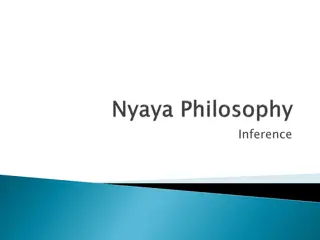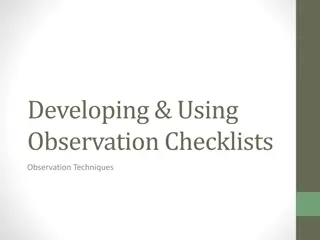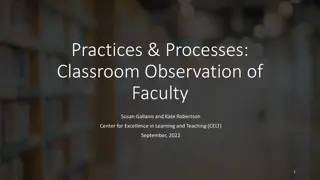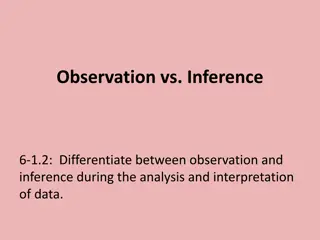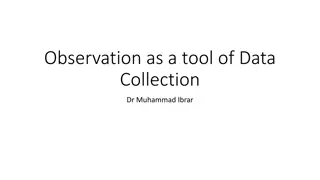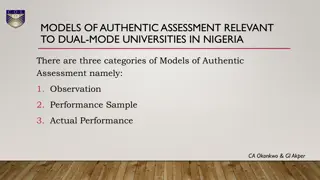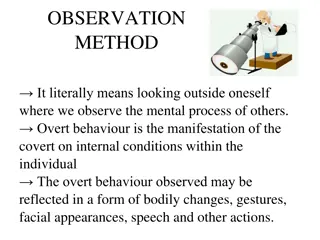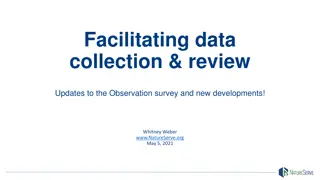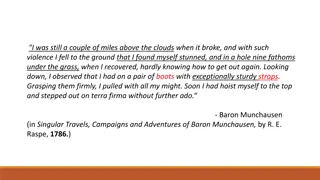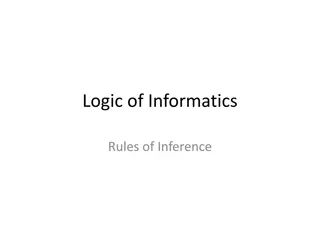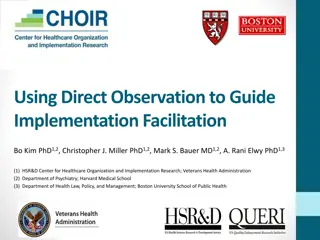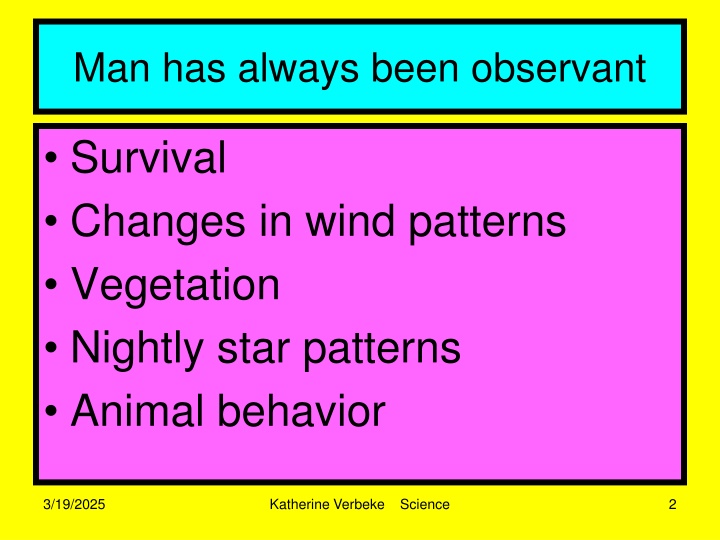
Scientific Methods of Observation and Inference
Explore the fundamental concepts of observation, inference, prediction, classification, measurement, and basic dimensional quantities in the field of science. Learn how scientists study the environment and make reasonable hypotheses based on indirect methods and information. Discover the significance of using one or more of the five senses to gather data and draw logical conclusions in scientific investigations.
Download Presentation

Please find below an Image/Link to download the presentation.
The content on the website is provided AS IS for your information and personal use only. It may not be sold, licensed, or shared on other websites without obtaining consent from the author. If you encounter any issues during the download, it is possible that the publisher has removed the file from their server.
You are allowed to download the files provided on this website for personal or commercial use, subject to the condition that they are used lawfully. All files are the property of their respective owners.
The content on the website is provided AS IS for your information and personal use only. It may not be sold, licensed, or shared on other websites without obtaining consent from the author.
E N D
Presentation Transcript
Man has always been observant Survival Changes in wind patterns Vegetation Nightly star patterns Animal behavior 3/19/2025 Katherine Verbeke Science 2
observation 3/19/2025 Katherine Verbeke Science 3
Observation Use one or more of the five senses in order to study the environment Sight Touch Smell Hearing Taste Statement of a fact 3/19/2025 Katherine Verbeke Science 4
Inference 3/19/2025 Katherine Verbeke Science 5
Inference Attempt to explain observations. Not necessarily correct. A reason why something is so. 3/19/2025 Katherine Verbeke Science 6
Inference Scientists use indirect methods and information Make reasonable hypothesis 3/19/2025 Katherine Verbeke Science 7
Inference How do scientists study structures they can t see? People cannot directly observe the earth s core and mantle. We cannot directly see objects in deep space. 3/19/2025 Katherine Verbeke Science 8
Prediction Special type of inference Using information, facts and trends, a pattern may be inferred, this leads to a prediction. 3/19/2025 Katherine Verbeke Science 9
Classification Categorize Group Sort Intention is to make things easier to study According to similarities in characteristics 3/19/2025 Katherine Verbeke Science 10
Measurement Comparison to a STANDARD 3/19/2025 Katherine Verbeke Science 11
BASIC DIMENSIONAL QUANTITIES THOSE THAT CANNOT BE BROKEN INTO SMALLER UNITS NOT A COMBINATION OF UNITS 3/19/2025 Katherine Verbeke Science 12
BASIC DIMENSIONAL QUANTITIES Length Distance between two points Mass Amount of matter in a substance Time Sense of events happening one after another Temperature Kinetic energy of a substance 3/19/2025 Katherine Verbeke Science 13
Standards of Measurement Length Meter Mass Kilogram Time Second Temperature Degree Celsius 3/19/2025 Katherine Verbeke Science 14
Temperature Scales KelvinFahrenheitCelsius Boiling point of water 373 K 212oF 100oC _____98.6oF Body temp Freezing point of water Salt water 32oF 0o C 273 K _____0oF Absolute zero -459.7oF -273oC 0 K 3/19/2025 Katherine Verbeke Science 15
OF DIMENSIONAL QUANTITIES 3/19/2025 Katherine Verbeke Science 16
Combinations of Dimensional Units Area length X width Volume length X width X height Speed mph - distance/time Density mass/volume 3/19/2025 Katherine Verbeke Science 17
Instruments Help us to gather information All instruments are an approximation of a true reading 3/19/2025 Katherine Verbeke Science 18
Error 3/19/2025 Katherine Verbeke Science 19
Error May be introduced in several ways 3/19/2025 Katherine Verbeke Science 20
Error 1. Instrument The instrument itself could be wrong 2. Human The person may read the instrument incorrectly 3/19/2025 Katherine Verbeke Science 21
Percentage Error 3/19/2025 Katherine Verbeke Science 22
Percentage Errror % Determines how accurate are your readings Degree of correctness Requires an accepted value 3/19/2025 Katherine Verbeke Science 23
Percent Error To Calculate % Error: Error = accepted measured X 100% accepted 3/19/2025 Katherine Verbeke Science 24
Problem Suzie measures the density of water to be .5 g/mL. The accepted value given by Mrs. Verbeke is 1 g/mL. What is Suzie s percentage error? Is this an acceptable measurement? Why or Why not? 3/19/2025 Katherine Verbeke Science 25

